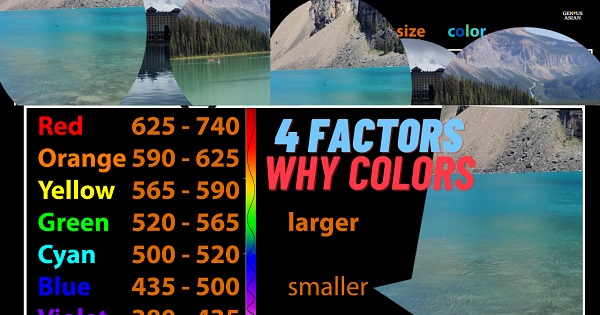https://youtu.be/KV8YBcVy15E Has anyone provided to you the detailed scientific explanation on the color of the water in the lake? The color of the water in the lakes is affected by the wavelength of the visible light spectrum that is reflected or absorbed by the chemical compounds in the water. The visible light spectrum consists of different colors that have different wavelengths and energies.
Scattering and absorption are two different ways that light interacts with matter. Scattering is when light is redirected in many different directions after it collides with particles in a medium. The amount of scattering depends on the size of the particles and the wavelength of the light. Absorption is when light is absorbed by a material, causing it to disappear. Different colors of light have different energies, and some materials are better at absorbing certain colors. The absorption and 3 different types of scattering are the 4 factors that we will discuss in this video.
Nobel Laureate Lord Rayleigh’s groundbreaking work shed light on how pure water molecules scatter blue, creating the azure hues we often observe in the sky and oceans. However, the depth of water bodies plays a pivotal role in the coloration due to absorption of light.
In the shallower waters, the red spectrum of light is absorbed entirely, while in the depths, all light tends to be absorbed, rendering the deep-sea a dark blue shade. Scuba divers witness these color shifts as they explore deeper and deeper underwater.
To broaden our understanding, we need to look at the three primary types of scattering based on particle sizes relative to light wavelength:
Rayleigh Scattering: Here, particles are significantly smaller than the light’s wavelength, and are responsible for the sky’s blue color.
Mie Scattering: This occurs when particles are about the same size as the light’s wavelength, often seen in the haze caused by dust, pollen, smoke, or water vapor.
Non-Selective Scattering: In this case, particles are much larger than the wavelength, scattering all wavelengths almost equally. This phenomenon is why water droplets and large dust particles cause fog and clouds to appear white.
Explore these phenomena with us and understand the science that paints our world with diverse colors. We encourage you to share your questions or topics you’re curious about in the comments below. Also, don’t forget to browse through our other videos for more enlightening insights into the wonders of nature.
Timestamps:
0:0 overview
0:40 visible light spectrum wavelengths
1:16 glacial rock flour
1:47 light scattering and absorption
2:37 three different types of scattering
3:16 other factors
4 Factors Causing Various Different Lake Water & Sky Colors | 8K Video

